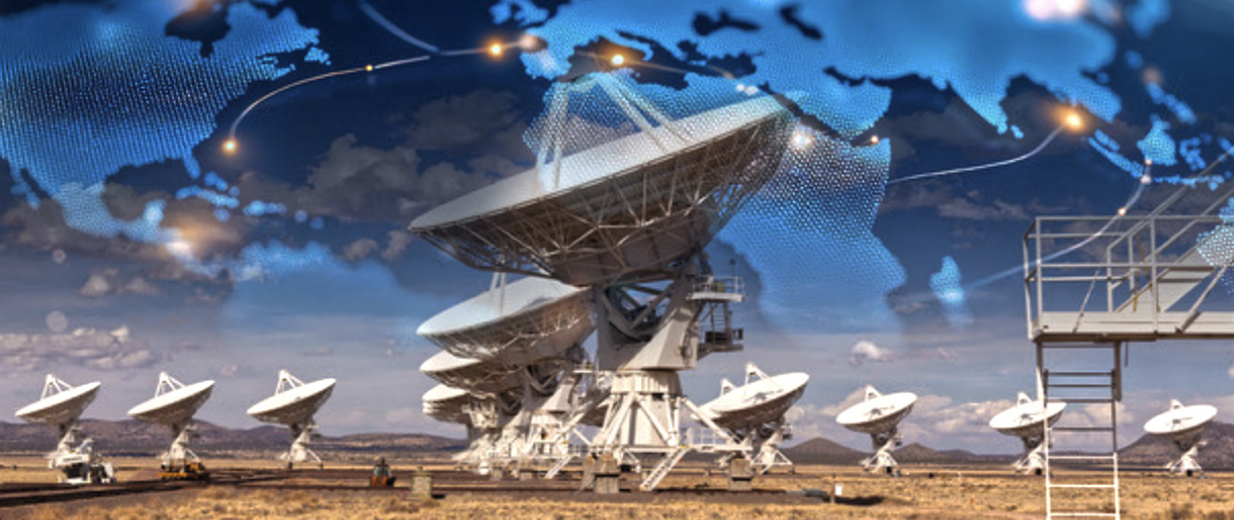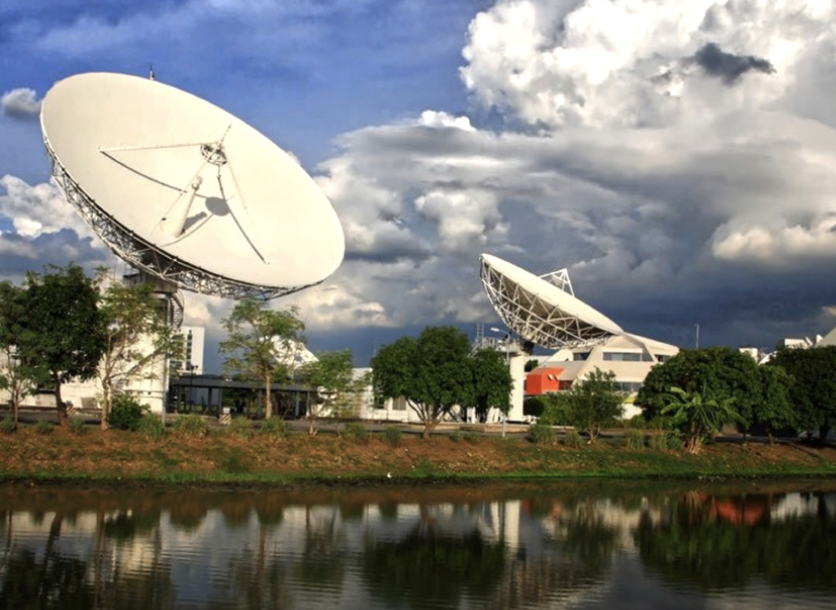Charilaos Kourogiorgas, Director, Atheras Analytics SAS
The SATCOM ground segment has become a highly complex environment within which to operate. Networks of hundreds of gateways that support and enable LEO and multi-orbit services to work mean that the amount of money spent at the ground level has increased significantly in recent years.

As a business case, ground networks are challenging; in recent years, it’s been reported that some well-established satellite operators have considered selling their ground segments simply to reduce costs.
Competition is increasing and this is driving innovation; at the same time, there is also rapid advancement in Artificial Intelligence (AI). While there’s a great deal of talk about AI in SATCOM, adoption is probably slower than in some other sectors. Although some SATCOM tools are already employing AI, primarily in the ground segment, it is in the early stages of deployment.

For operators, efficiency is critical. Each gateway is costly and must be optimized to avoid downtime and to maximize Return On Investment (ROI). Coordinating and operating the ground segments themselves also carries high costs and, in order to do so efficiently, data must be gathered and processed in real time to glean a true picture of performance.
Fortunately, this is one area where AI is already making a significant impact, supporting operators with site qualification, network design, coordinating gateways, and predicting downtime, among other use cases.
_________________________________________
Newspace Ground Segment Challenges
_________________________________________
While ground segments that support traditional GEO satellite networks need only a few gateways to provide optimal coverage and connectivity to users on the ground, many, many more gateways are required for LEO and multi-orbit networks.
A constellation with hundreds or even thousands of satellites needs an expansive ground segment if it is to support millions of users. While various factors determine the number of gateways needed, such as the constellation size, as well as service and coverage requirements, tens or even hundreds of gateways may be required.
OneWeb, for example, has more than 600 satellites in LEO and is aiming for around 40 gateways for global coverage, with the exclusion of some countries such as North Korea, Russia, Iran and China. While Starlink, which reportedly has more than 7,000 active satellites on-orbit, but which does not publish the number of active ground stations, will most likely have ground stations running into the hundreds.
Building a ground segment to support these colossal constellations is extremely costly and managing the gateways in such a way to minimize downtime and maximise ROI is highly complex. Getting this correct is critical for operators who are challenged with having to raise billions upon billions of dollars of investment to cover the cost of building and launching the necessary number of satellites to form a constellation, as well as building and operating an extensive ground segment. On top of this, operators must also ensure there is enough in the coffers to cover costs until revenue starts to flow into the company’s coffers.
_________________________________________
Site Qualification and Network Design
_________________________________________
Networks need to be designed with efficiency in mind, directly from the start of their implementation, in terms of how many teleports are required and the number of gateways required per teleport location. Additionally, the location where each of these gateways is situated must take into account the presence of intersatellite links, the impact of the local weather as well as establishing the optimum link budget/fade margin and optimum gain for each gateway antenna.
Weather patterns are of particular relevance for networks employing higher frequency bands, such as Ka-band and Q-/V-band, as these bands are highly susceptible to attenuation caused by precipitation. To determine the influence of weather on candidate ground station locations, historical weather data must be taken into account.
Traditionally, determining the optimal number and location of gateways, and planning for link availability and weather resilience, involved significant manual analysis and conservative assumptions. It’s also worth noting here that, when assessing the impact of weather, conventional approaches to ground network design do not always capture the impact of recent climate change.
To address this challenge, it’s essential that recent years’ weather data is included to ensure that climate change impact is taken into account. Using AI tools with advanced algorithms, operators can now analyze historical rainfall as well as more recent weather data to quickly determine link availability for potential gateway locations.
 Identical AI-based approaches can also be used to identify correlations between different sites to help determine how likely they are to be affected by the same weather system. Operators can use these types of AI algorithms to run simulations and model various groupings of gateway sites to find the combinations that offer the highest availability at the lowest cost.
Identical AI-based approaches can also be used to identify correlations between different sites to help determine how likely they are to be affected by the same weather system. Operators can use these types of AI algorithms to run simulations and model various groupings of gateway sites to find the combinations that offer the highest availability at the lowest cost.
However, selecting the correct number of gateways, and where to place them, is only part of the challenge. There’s a constant trade-off between service availability and the cost of infrastructure.
Operators must decide how many gateways are required, determine optimal antenna gain, and calculate the most accurate link budgets and fade margins. AI assists here, as well, enabling operators to reduce capex. By selecting the correct number of gateways, with locations that complement one another and reduce the chance of simultaneous weather outages, operators can build in resilience and ensure the desired throughput is reached, all without adding unnecessary diversity gateways that increase complexity and cost.
The difference between needing, say, 20 antennas or 24 antennas to achieve certain throughput in a Non-Geostationary Orbit (NGSO) constellation, could well be in excess of several million dollars—if AI tools can help operators account for such savings, that is going to make a huge and beneficial difference to the industry.
________________________
Network Management
________________________
Of course, designing a cost-effective, multi-gateway network is only half of the job. Managing that network, with all its moving parts, brings about its own set of challenges, some of which AI can certainly help operators to overcome.
Advanced AI-powered tools with predictive analytics can provide operators with the ability to monitor the network in real time as well as foresee potential weather-related outages hours in advance. This foresight is essential as it gives operators the time needed to synchronize and switch traffic between gateways/teleports before service is disrupted. With this advance warning, operators can then ensure that the backup gateway is unaffected and remains viable for traffic transfer.
 This intelligent network management allows for a proactive approach to service continuity. By anticipating weather disruptions and automatically or manually rerouting traffic through unaffected gateways, operators can maintain quality of service and minimise interruptions. The result is a more resilient and efficient network, capable of supporting the demands of modern LEO and multi-orbit satellite operations.
This intelligent network management allows for a proactive approach to service continuity. By anticipating weather disruptions and automatically or manually rerouting traffic through unaffected gateways, operators can maintain quality of service and minimise interruptions. The result is a more resilient and efficient network, capable of supporting the demands of modern LEO and multi-orbit satellite operations.
Ultimately, building and managing reliable ground networks at the scale required for LEO requires far more than just infrastructure. Thiis work demands intelligent and proactive orchestration, and AI is fast becoming an indispensable tool in making that goal possible.
atherasanalytics.com

Dr. Charilaos
KourogiorgasAuthor Dr. Charilaos Kourogiorgas has a Ph.D. on channel modelling for satellite and wireless terrestrial communication systems for which he received an award for outstanding research, following which he was awarded a Marie Curie fellowship in which he studied the applications of AI in the operation of next generation, high frequency, satellite communications. He has been working for more than 10 years on research and development in satellite communication systems and has applied different AI and ML techniques for channel prediction, ACM optimisation and resource allocation for flexible payloads and the use of neural nets in transceivers for real-time modulation and coding of digital information. He has published more than 100 journal and conference papers on wireless communications topics.

